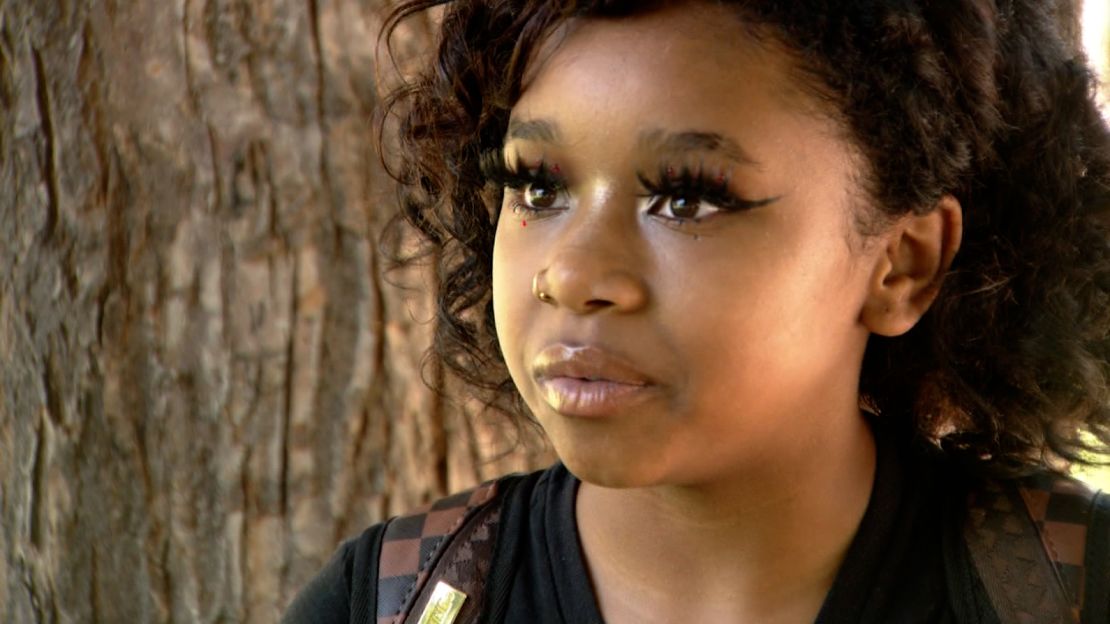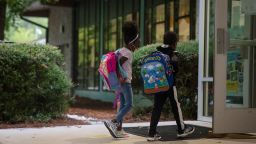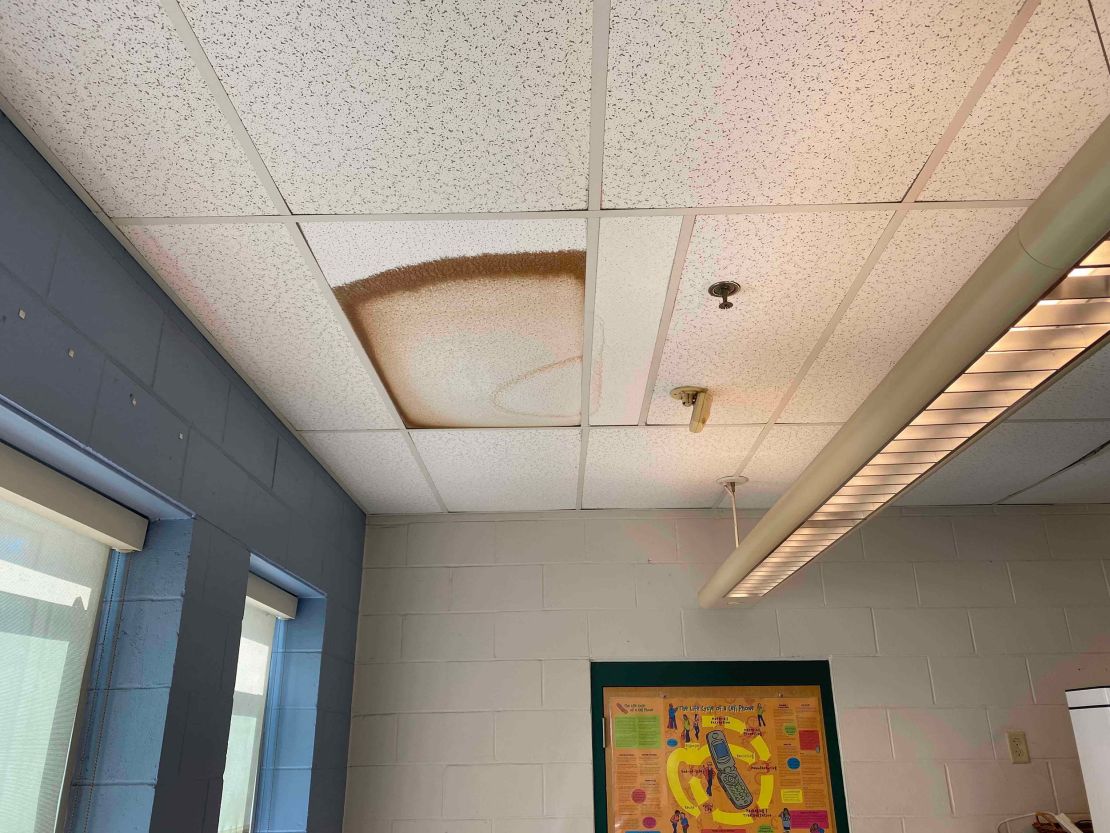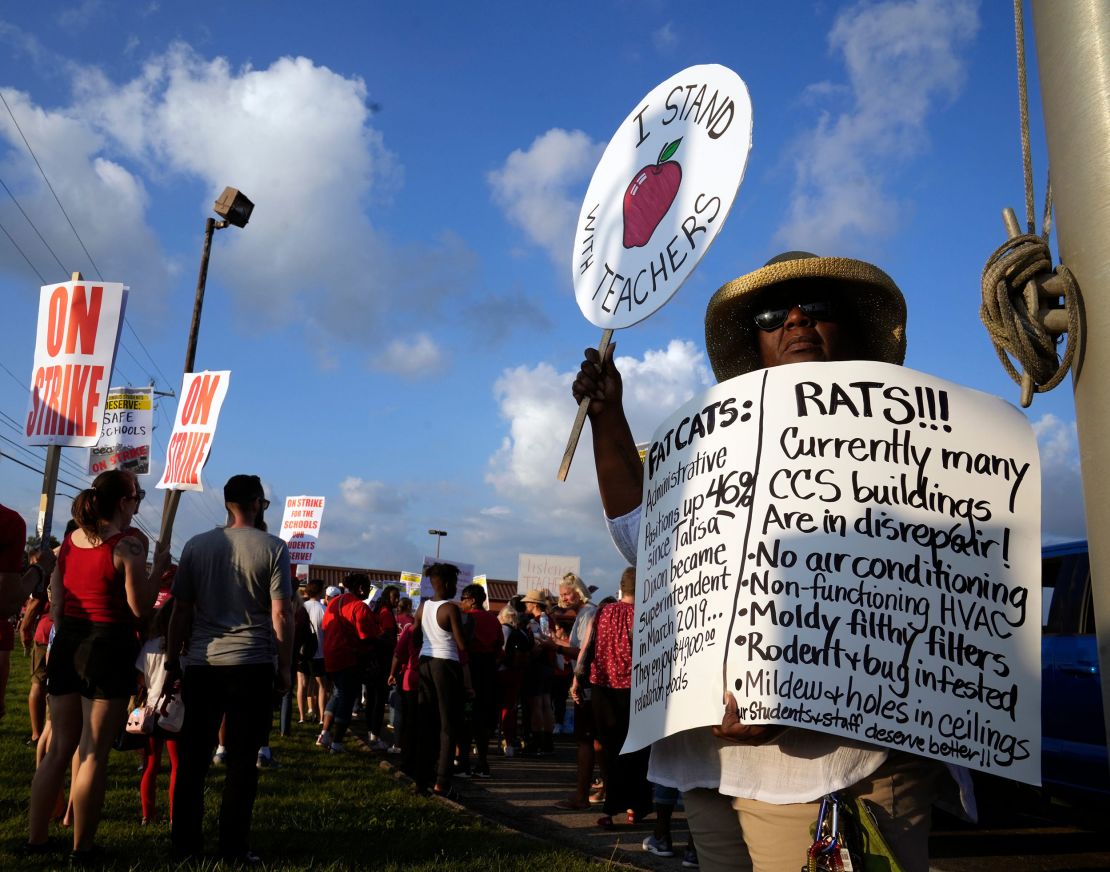CNN —
When it gets too hot in Denver and Baltimore classrooms, students are sent home because their schools don’t have air conditioning.
In Massachusetts, checking for rusty water leaking from a ceiling has become a “morning ritual.”
In California, a school’s cockroach infestation has gotten so bad that some students fear eating lunch.
While school infrastructure problems are a perennial challenge, national data and dismal stories from teachers suggest the crises are reaching an apex. Atrocious school conditions have even prompted some teachers this school year to go on strike.
How CNN found subpar school conditions
- CNN asked teachers about the conditions of their schools and received more than 250 responses from across the US. Some teachers spoke on the condition of anonymity out of fear of retribution.
“We’re getting to a critical stage now,” said Mike Pickens, executive director of the National Council on School Facilities. “The average age of a school building now is from 49 to 50 years” – the highest in memory. Some schools date back to World War II.
But as schools get older and more desperate for repairs, the funding gap for public schools keeps getting worse.
“American Society of Civil Engineers gives the condition of America’s 100,000 public school buildings an overall grade of D+,” the National Education Association said late last year. “And no wonder – half our school buildings are half a century old.”
Now, everyone is paying the price for underfunded schools.
Students get sick, distracted or miss entire days of education when conditions turn abysmal. Parents sacrifice income to provide child care when classes suddenly get canceled.
Burnt-out teachers already stressed by the pandemic and school violence are pushed closer to leaving the profession.
Even those not directly connected to deteriorating schools will be impacted, Pickens said.
Without more investment in US public schools, he said, “we get further and further behind on the world stage.”
From Maryland to Colorado, students struggle to breathe in oppressively hot classrooms
In Baltimore, Marcia Turner is sick of her kids feeling sick at school.
“My children can’t even breathe in the school. It be so hot. One have asthma,” Turner told CNN affiliate WMAR.
Fourteen Baltimore schools don’t have any air conditioning, school district Chief Operating Officer Lynette Washington told CNN. Those students get sent home early when it’s too hot to learn – 85 degrees or higher in their classrooms, she said.
Stifling temperatures can impede students’ academic success. Researchers who looked at millions of test scores from American high schoolers found students tend to score lower when it’s a hot school year, according to a 2018 study published by the National Bureau of Economic Research.
But air conditioning mitigated many of the negative effects, the researchers found.
The lack of air conditioning doesn’t just stymie students’ learning. It also hurts parents who can’t afford to leave work to take care of their children in the middle of the day.
“And I can’t get off because I’m just starting a job,” Turner told WMAR.
The Baltimore school district’s COO said she’s frustrated, too. About 65% of the city’s public schools are over 41 years old; more than a third are over 51 years old.
“We have such a backlog of infrastructure that has not been updated and upgraded in a consistent way. When they’re not upgraded toward the end of their life cycle, then we just hold onto them, and we just keep putting Band-Aids on them,” Washington said.
“We do not have the dollars. We do not have the resources.”
Five years ago, Baltimore had 75 public schools without air conditioning, Washington said. Installing AC in all those schools would cost $250 million – about five times the district’s entire annual infrastructure budget.
So Baltimore Public Schools is chipping away at the problem over years. Of the 14 schools that still lack air conditioning, six will have it in the next 24 months, Washington said. The other eight will be completely renovated – with air conditioning – or shuttered.
Why window AC units won't fix the problem
- For schools that don’t have air conditioning, window AC units aren’t a practical solution, said Baltimore Public Schools Chief Operating Officer Lynette Washington.
- “The challenge with these window air conditioning units is that they don’t meet what is called ASHRAE (American Society of Heating, Refrigerating and Air-Conditioning Engineers) standards because they do not provide the ventilation and fresh air intake required for classrooms,” she said.
- “The other challenge with the air conditioning box units is that they have a very short life cycle. So they may last for a year or two … (and) have to be consistently maintained and replaced. We don’t have the resources.”
Many states away in Colorado, more than 30 schools in Denver Public Schools had to send kids home early and four closed for full days this month due to the heat, the district said. Temperatures soared in Denver the first full week of September, with daily highs ranging from 97 to 99 degrees, according to the National Weather Service.
“I can’t change the fact that it’s 88 degrees in the classroom,” said Sara, a teacher at McAuliffe International School, which had three days of early dismissal. “It gets really draining, physically and emotionally, to be kind of beat down by these factors, day in and day out.”
The middle school in Colorado’s largest school district has no air conditioning, said Trena Marsal, the district’s executive director of facility management. The infrastructure, she said, was never meant for higher temperatures.
“Our oldest building is (from) 1889,” she said.
Forty Denver public schools still lack AC, down from 55 in 2019, Marsal said. In 2020, Denver voters approved bonds to pay, in part, for the installation of air conditioning units in schools, including a two-year plan to air-condition McAuliffe, the school district said.
But supply chain problems delayed installations this summer, leaving the work at eight schools only partially completed.
So the district has heat mitigation liaisons, Marsal said. Portable cooling units are strategically placed during the day, and windows are opened at night, she said.
Opening windows, though, means “we basically daily get wasps and flies – and it’s always exciting when that happens,” Sara said.
In the heat of day, Sara said, conditions in classrooms can make older kids anxious.
“You have students, I’m sure, who are nervous about sweat stains or they sit down on a plastic chair and their butt gets sweaty,” she said. “It’s stuff as an adult we’re not as self-conscious about, but a teenager absolutely is.”
“I sweat, like, everywhere,” seventh grader Zmarra Fleming told CNN affiliate KUSA. “In the classrooms, it’s really hot. It’s, like, hot where the point is you can’t really breathe in there.”

McAuliffe International School student Zmarra Fleming said it was hard to breathe in her hot classroom.

















 on the uploaded document.
on the uploaded document.
0 General Document comments
0 Sentence and Paragraph comments
0 Image and Video comments
New Conversation
New Conversation
New Conversation
New Conversation
General Document Comments 0

